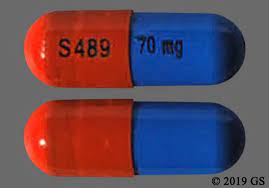Buy Methadone online without prescription and overnight delivery
Although methadone addiction is very rare, if a person does develop an addiction to it, withdrawal can be difficult.
Methadone is a prescription opioid medication that works in the body in a similar way to other opioids, such as heroin or OxyContin. However, its effects are very different, as methadone is a slower acting opioid. This means that it may be helpful in treating opioid withdrawal symptoms from other drugs. Keep reading to learn more about methadone and methadone withdrawal.
What is methadone?
Methadone is an opioid that doctors may prescribe to people experiencing pain for whom other opioids do not work or to those with a high risk of developing addiction.
It is also a medication that can help ease the symptoms of withdrawal from other opioids. In most cases, doctors prescribe it for this purpose, not for relieving pain.
Methadone is a slower acting opioid than most other opioids, with a longer half-life. The half-life is the length of time that it takes for half of the dose to leave the body. Methadone’s half-life ranges from
Withdrawal can happen for two reasons.
The first is if methadone is underdosed (meaning that a person does not take enough of it) and does not counteract withdrawal from other opioids. This causes the body to experience withdrawal from other drugs.
The second is methadone withdrawal, which can occur when the body becomes physically dependent on the medication.
Some common causes of methadone withdrawal include:
- Inadequate or incorrect dosing: If a person does not take enough methadone, they may experience withdrawal from the opioid for which methadone is being used as treatment.
- Suddenly stopping methadone: A 2013 Cochrane review found that slowly tapering the dosage of methadone could reduce the risk of withdrawal symptoms.
- Using certain medications with methadone: Some other medications may decrease the effectiveness of methadone.
These include phenobarbital, phenytoin, ritonavir, carbamazepine, and drugs such as potassium. - Self-medication: People should only take methadone if a doctor has prescribed it to them. Self-medication with methadone is dangerous and increases the risk of overdose, dependence, addiction, and withdrawal if a person stops taking it abruptly.
Some symptoms of methadone withdrawal include:
- intense cravings
- anxiety, depression, and mood changes
- muscle pain
- cold sweats
- chills
- hot flashes
- diarrhea, vomiting, or constipation
- difficulty sleeping
- difficulty concentrating
- confusion
- irritability
- nightmares
- decreased appetite
- a runny nose
- a rapid heart rate
- high blood pressure
- shaking
- watery eyes
These symptoms may intensify preexisting conditions. For example, a person with high blood pressure may develop dangerous hypertension, while a person with post-traumatic stress disorder may experience more anxiety, flashbacks, and panic.
Withdrawal symptoms vary from person to person, and they can change quickly. For example, a person might feel anxious and cold one minute then depressed and hot a few minutes later.
The stages of methadone withdrawal depend on the dosage and how much of the medication a person takes.
Methadone withdrawal varies from person to person. Some people may experience withdrawal at higher doses, and some may experience it at lower doses.
The symptoms usually peak 2–3 days after a person stops using methadone. This is the time of most intense withdrawal, when a person is at highest risk of returning to unsafe opioid use.
After this point, withdrawal symptoms should slowly decline.
Longer methadone treatment increases the length of time that someone is in recovery and may reduce long lasting withdrawal symptoms. This usually means spending a year or more in treatment.
Methadone is a prescription drug that a person should only use under the supervision of a doctor or another medical professional.
Methadone treatment for other opioid addictions is a medical process that requires ongoing support. A person and their doctor should work together to decide when, if at all, and how rapidly to reduce the dose of methadone.
Treating methadone withdrawal is similar to treating other forms of opioid withdrawal. It should focus on managing both physical and psychological symptoms while lowering the risk of returning to unsafe opioid use.
Some important considerations include:
- Providing psychological and emotional support: Psychotherapy and support groups can help a person navigate withdrawal and develop healthy coping strategies.
- Education: Educating a person about withdrawal and what to expect can make the process feel less overwhelming.
- Monitoring physical health: Certain people — including those with heart problems, diabetes, or cancer — may have a higher risk of serious complications. A doctor should monitor them, and they may prescribe additional medications to reduce the risk.
- Self-care: Creating distractions and a temptation-free environment may reduce the risk of relapse
A person should not withdraw from methadone without medical supervision. Gradually tapering the dose under the supervision of a doctor improves outcomes and reduces the risk of experiencing serious withdrawal.
During withdrawal, a person should contact a doctor if they:
- feel very sick
- feel that their symptoms are not improving
- feel confused
- feel very lethargic
- experience chest pain
- relapse or begin using other drugs
- change their dose of methadone
Methadone withdrawal can be challenging for those receiving it for pain or addiction.
There are highly effective medications, such as methadone, that can help individuals recover from addiction and achieve sobriety. A person should make sure that they are under medical supervision throughout the entire process.


Comments
Post a Comment